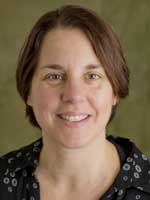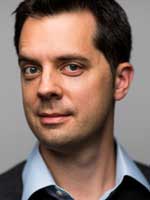Plenary Sessions
Particle Resuspension: From Indoor and Outdoor Sources to the Human Receptor
Andrea Ferro, Clarkson University
Particle resuspension is a major contributor to both indoor and outdoor aerosols. While we benefit from decades of research in this field, there has recently been more attention on particle resuspension due to its role in exposure to bioaerosols that impact human health. This presentation will address particle resuspension from source to receptor, including adhesion and detachment mechanisms, primary factors affecting resuspension, and the role of resuspension in human exposure to aerosols. Current models for resuspension, validated by both wind tunnel and bulk air experiments, will be discussed along with best estimates for resuspension source emission terms and intake fractions for inhalation exposure. The work has many applications, including controlling particle adhesion and removal in the manufacturing processes for the semiconductor, xerographic, and pharmaceutical industries, understanding residential exposures to pollutants associated with indoor dust from resuspension via human activity, and protecting soldiers in the field from exposure to chemical and biological agents.
Biosketch:
Andrea Ferro is a professor of Civil and Environmental Engineering and a faculty affiliate of the Center for Air Resources Engineering and Science (CARES) at Clarkson University. Her technical expertise is focused on indoor air quality and human exposure to particulate pollutants. She has been working in the field of particle resuspension for approximately 20 years, including measurement and modeling of particle adhesion, detachment and transport at multiple scales. The overall goal of her work is to improve human health by improving the quality of the air we breathe through source control, ventilation and purification strategies, education, and regulatory policy.

Numerical modelling of titania nanoparticles from flame synthesis.
Markus Kraft, University of Cambridge
Titanium dioxide, also known as titania, nanoparticle is one of the most studied materials for its wide-ranging applications with high commercial importance including photocatalysis and solar cells. The properties of nanoparticles, including size, crystallinity and morphology, have been shown to critically affect the performance of the material in these applications. The main challenge lies in controlling these properties during manufacturing process as required for specific applications. Among various possible routes, flame synthesis is one of the most preferred manufacturing options offering a direct, continuous synthesis with high throughput and versatility, increasingly becoming the standard in industry and laboratory experiments. Despite recent advances in research community, a comprehensive understanding of chemistry and particle formation involved in titania synthesis remains lacking. Computational modelling provides attractive capabilities to study such system with aims to gain further understanding of the underlying chemical and physical mechanism and to optimize the process. Following the success with soot, detailed population balance model has been applied for titania system, with titanium tetraisopropoxide (TTIP) and titanium tetrachloride (TiCl4) as starting precursors. The model, combined with detailed kinetic mechanism developed from quantum chemistry calculation, has been used to describe the particle dynamics in both laboratory and industrial conditions with good predictive power. Coupled with experimental characterizations of lab-scale configurations such as premixed stagnation and diffusion flames, the model can be validated and further refined. Moreover, further insights into complex mechanism of phase transformation and doping of titania nanoparticles in flame can be gained to extend the predictive power of the model. The model can subsequently be used to optimize the synthesis process to produce tinania nanoparticles with specifically tailored properties for use in applications such as photocatalytic water splitting for hydrogen evolution.
Biosketch:
Prof Markus Kraft is a Fellow of Churchill College Cambridge and Professor in the Department of Chemical Engineering and Biotechnology. He is the director of CARES, the Singapore-Cambridge CREATE Research Centre, and Principle Investigator of C4T the “Cambridge Centre for Carbon Reduction in Chemical Technology”, which is a CARES research programme. Professor Kraft obtained the academic degree 'Diplom Technomathematiker' at the University of Kaiserslautern in 1992 and completed his Doctor rerum naturalium in Chemistry at the same University in 1997. Subsequently, he worked at the University of Karlsruhe and the Weierstrass Institute for Applied Analysis and Stochastics in Berlin. In 1999 he became a lecturer in the Department of Chemical Engineering, University of Cambridge. In 2012 he obtained a ScD form the same University. He has a strong interest in the area of computational modelling and optimisation targeted towards developing carbon abatement and emissions reduction technologies for the automotive, power and chemical industries. Together with his research team he has also contributed significantly towards the detailed modelling of combustion synthesis of organic and inorganic nanoparticles and worked on spray drying and granulation of fine powders.

Towards a molecular understanding of biogenic organic aerosol: from new particle formation and growth to multiphase aging
Joel Thornton, University of Washington
Organic carbonaceous material is a ubiquitous and often significant fraction of atmospheric submicron aerosol mass, and can be responsible for driving the growth of ultrafine particles to cloud condensation nuclei sizes. Development of a molecular-level understanding of the processes governing the evolution of organic aerosol mass has been a long running challenge. I will present new insights into the formation and growth of aerosol due to the chemistry of biogenic hydrocarbons, using both in situ observations as well as controlled simulation chamber studies. An underlying theme is the role novel instrumentation techniques have had recently in allowing direct observation and quantification of the molecules and chemical processes contributing to organic aerosol mass formation and properties such as volatility. Example systems will include constraints on the molecules driving growth of recently nucleated particles in the boreal forest, the contribution of isoprene to secondary organic aerosol (SOA) mass, and the role of anthropogenic nitrogen oxides in the conversion of terpenes to SOA.
Biosketch:
Joel Thornton is a professor in the Department of Atmospheric Sciences at the University of Washington, with an adjunct position in the Department of Chemistry. He received is PhD from the College of Chemistry at the University of California, Berkeley and was a postdoctoral research fellow in the Department of Chemistry at the University of Toronto. His research interests include atmospheric organic aerosol formation and growth, multi-phase chemistry of aerosol particles, reactive nitrogen and halogen budgets, and field-deployable instrumentation and method development centered on selected-ion chemical ionization mass spectrometry.

Toward a Greater Understanding of the Chemistry and Impacts of Mineral Dust and Sea Spray Aerosols
Vicki H. Grassian, University of California San Diego
Mineral dust and sea spray aerosols represent the largest quantity of aerosol mass present in the Earth's atmosphere. This talk will focus on understanding molecular processes of mineral dust and sea spray aerosols through laboratory studies. These studies combine and integrate a broad range of measurements including single particle analysis so as to better determine how mineral dust and sea spray aerosols impact atmospheric chemistry, climate, and human health.
Biosketch:
Vicki H. Grassian is currently a Distinguished Professor at the University of California San Diego with appointments in the Departments of Chemistry and Biochemistry, Nanoengineering and Scripps Institution of Oceanography and she holds the Distinguished Chair of Physical Chemistry within the Department of Chemistry and Biochemistry. She is also the co-Director of the Center for Aerosol Impacts on Climate and the Environment (CAICE) a multi-institutional NSF-Chemical Center of Innovation and an Associate Dean for the Division of Physical Sciences. Professor Grassian's research interests are in the areas of environmental molecular surface science, heterogeneous atmospheric chemistry, climate impact of atmospheric aerosols, and environmental and health aspects of nanoscience and nanotechnology. She is the recipient of several awards including the National American Chemical Society Award for Creative Advances in Environmental Science and Technology for her original and creative contributions in understanding mineral dust aerosol properties through laboratory studies and their impact on atmospheric chemistry and climate, the Royal Society of Chemistry John Jeyes Award for her pioneering contributions to the chemistry of environmental interfaces, heterogeneous atmospheric chemistry and the environmental implications of nanomaterials and the ACS Midwest Award which recognizes a scientist in the midwest region who has made meritorious contributions to the advancement of pure or applied chemistry. Professor Grassian has mentored over one hundred students and postdocs in her laboratory including twenty-five students who have received their PhDs under her guidance.

Dates to Remember
April 28: Abstract Submission Deadline
July 28: Early Bird Registration Deadline
(Note: All presenters MUST register for the conference.)
July 28: Late Breaking Poster Abstract Deadline
September 15: Hotel Sleeping Room Reservation Cut-off (both hotels)
October 16-20: AAAR 36th Annual Conference
Location
Raleigh Convention Center
500 S. Salisbury St.
Raleigh, NC 27601
Hotels
Raleigh Marriot City Center
500 Fayetteville Street
Raleigh, NC 27601
Sheraton Raleigh Hotel
421 S. Salisbury Street
Raleigh, NC 27601
Conference Registration Fees
| Registration Categories |
Early Bird Received By July 28, 2017 |
Advance Received Between July 22 and August 14, 2017 |
On-Site Received After August 14, 2017 |
| Regular | $609 | $699 | $792 |
| Early Career | $481 | $552 | $621 |
| Retiree | $185 | $185 | $276 |
| Student | $185 | $185 | $276 |
